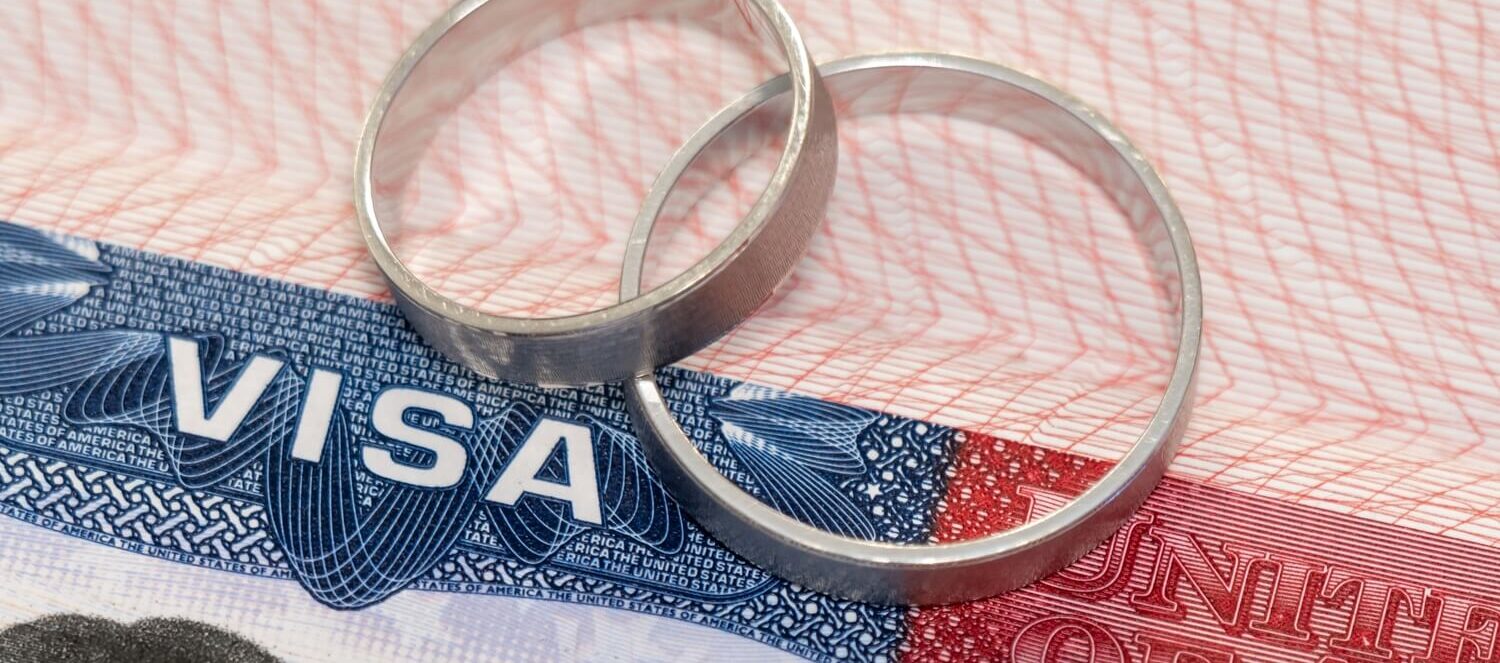
Under the 90-day rule, there’s a presumption of misrepresentation (fraud) if a person violates their nonimmigrant status or engages in conduct inconsistent with that status within 90 days of entry. This rule only applies to nonimmigrants with visas or statuses that do no carry an allowance for immigrant intent. If nonimmigrants take certain actions within 90 days, they may face extra scrutiny when applying for a green card.
Misrepresentation Explained
Misrepresentation occurs when a person provides false information or hides the truth to gain an immigration benefit. In the context of the 90-day rule, U.S. Citizenship and Immigration Services (USCIS) may assume misrepresentation if a person enters the U.S. on a temporary visa and then quickly applies for a green card.
Immigrant Intent
Temporary visas, like tourist or student visas, require proof that the visitor intends to leave the U.S. after their stay. If someone applies for a green card shortly after entering, USCIS may question whether they were truthful about their original intent. This could lead to a finding of misrepresentation.
How Misrepresentation Occurs
An example of misrepresentation is when someone enters on a tourist visa, claiming they are only visiting, but secretly has the intention to marry and apply for a green card. If this all occurs soon after entry, it creates suspicion that the true intent at the time of entry was to become an immigrant (permanent resident).
In fact, many couples do marry and apply for a green card after entry on a B-2 visa or ESTA. We've explained how that's possible in this example.
Department of State Use of 90-Day Rule
For many years, the U.S. Department of State has utilized policies that enables their adjudicators to “presume” misrepresentation. In other words, they can assume something is true if certain circumstances are at play. The 90-day rule created a rebuttable presumption that a visa applicant made a misrepresentation if the individual engaged in certain conduct within 90 days of admission to the United States.
The Foreign Affairs Manual (9 FAM 302.9-4(B)(3)) suggests the following actions are sufficient to trigger the application of the 90-day rule:
- Engaging in unauthorized employment on B-1/B-2 nonimmigrant status;
- Enrolling in a course of study if such study is not authorized for that nonimmigrant classification;
- A nonimmigrant in B status, marrying a U.S. citizen or lawful permanent resident and taking up residence in the U.S.; or
- Undertaking any other activity for which a change of status or an adjustment of status would be required, without the benefit of such a change or adjustment.
Because there’s a presumption, this puts the burden on the nonimmigrant to prove it is not true. Therefore, this rule provides broad latitude for consular officers in making misrepresentation finds.
USCIS Use of the Rule
At this point, it’s important to point out that the State Department’s 90-day rule does not apply to USCIS adjudications. In other words, USCIS does not use the State Department’s rule when making decisions on applications like Form I-485. USCIS had their own version of the 90-day rule but eliminated it in July 2021.
Instead, USCIS officers use different guidance to evaluate whether an applicant made a material misrepresentation. The USCIS Policy Manual states: “If there is evidence that would permit a reasonable person to conclude that the applicant may be inadmissible for fraud or willful misrepresentation, then the applicant has not successfully met the burden of proof. In these cases, USCIS considers the applicant inadmissible for fraud or willful misrepresentation, unless the applicant is able to successfully rebut the officer’s inadmissibility finding.”
What This Means for Green Card Applicants
Much of this article is technical and may be confusing for many readers not already familiar with immigration law. But it’s an essential explanation to get to this point.
What to Avoid
While USCIS no longer explicitly references the 90-day rule, it may still assess cases for potential misrepresentation based on an applicant's actions shortly after entering the United States. For USCIS to make a finding of misrepresentation, there must be circumstances and/or the immigration officer must have evidence that makes misrepresentation more likely than not. USCIS’s policy is generally more lenient that the State Department, particularly as it relates to marriage with a U.S. citizen. Officers do have the broad latitude to determine if an applicant made a misrepresentation. Therefore, it’s still smart for nonimmigrant visitors to avoid situations that appear obviously flagrant such as:
- Selling property such as a residence in the home country;
- Quitting a job in the home country;
- Marriage to a U.S. citizen within the first few days of entry;
- Scheduling the immigrant medical exam right away; or
- Filing Form I-485 shortly after arrival to the United States.
What to Do
Wait a reasonable amount of time before acting. The 90-day period is still a good guideline. However, the officer may evaluate misrepresentation if there are activities that raise suspicion less than 90 days after entry or even more than 90 days after entry.
To determine your entry date, refer to your I-94 arrival/departure record. The USCIS officer adjudicating your adjustment of status case will always evaluate your most recent entry to the United States. If you have multiple I-94 records or multiple entries, always refer to that most recent entry.
Exception for Immediate Relatives of U.S. Citizens
While there is legal precedent that immediate relatives of U.S. citizens are exempt from misrepresentation under an older 30/60 day rule, the first 90 days should be considered risky for an adjustment of status. Based on two cases (the Matter of Battista and the Matter of Cavazos), immediate relatives of U.S. citizens who wish to apply for adjustment of status are exempt from the misrepresentation.

Nonetheless, this is still risky territory. If you entered the United States with a nonimmigrant visa (or visa waiver program or border crossing card) and want to adjust status as an immediate relative (or even get married) within 90 days of entry, speak to an immigration attorney first to ensure there aren’t other factors that affect you.
90-Day Rule Examples for I-485 Applicants
Understanding how the 90-day guideline applies in real situations can help you avoid mistakes. Below are examples of common scenarios where USCIS may question an applicant’s intent.
Example: TN Visa Holder
Jonathan is a 24-year old Canadian citizen who enters the United States with a TN worker visa. Jonathan has been simultaneously pursuing a green card through an employer. The employer completed the PERM process and has an approved I-140 petition. The visa number also became available shortly before Jonathan’s most recent entry to the U.S. on the TN visa. Thus, Jonathan files an adjustment of status application soon after arriving in the U.S. Since Jonathan has immediate access to a green card, the USCIS officer may allege Jonathan had a preconceived intent to immigrate upon entering the U.S. on a TN visa. Jonathan could have avoided this problem by returning to Canada and applying for a green card through consular processing.
Example: Family Preference Entering on Visa Waiver Program
Julian is a 5-year-old French citizen whose mother recently obtained a green card. Julian’s mother transports him to the United States through the Visa Waiver Program. Although the VWP is for temporary visits, the intent was to get Julian to the U.S. in order to file Form I-485 and adjust status. As the child of a permanent resident, Julian falls into the family preference category. If Julian adjusts status immediately after entry, USCIS may suspect that there was a preconceived intent even though he is child. If Julian adjusts status after 90 days, he will be forced to file Form I-485 while unlawfully present. The Visa Waiver Program visit is valid for 90 days. An applicant from the family preference category cannot file Form I-485 when unlawfully present, and USCIS will likely deny the application. (USCIS may also put the child in removal proceedings.)
Example: Immediate Relative Entering on a B-2 Visa
Marta is a 60-year old Costa Rican citizen who applied for and received a B-2 visa to come to the United States to visit her son and her son’s family. When Marta entered the U.S., she had only intended to stay for a short period of time. Marta decides that she really enjoys being reunited with family in the United States. Therefore, she files an adjustment of status application just eight weeks after entering the U.S. It’s possible that the USCIS could question Marta’s intent. However, without evidence of misrepresentation (and because Marta is an immediate relative of a U.S. citizen), it is unlikely that the USCIS officer would flag her case for misrepresentation. She didn't have immigrant intent when she entered.
How Dual Intent Visas Fit In
A dual intent visa allows a foreign national to enter the United States as a nonimmigrant but retain the option to adjust status to a permanent resident at some point in the future. Several visas inherently contain the possibility that the visitor will become a permanent resident in the U.S. For example, a foreign fiancé uses a K-1 fiancé visa to enter the U.S. and marry a U.S. citizen. Most will remain in the U.S. and adjust status to become permanent residents. Likewise, employers will routinely sponsor a foreign worker for an H-1B visa and later sponsor the nonimmigrant for a green card. Most E-, H-, K-, L-, O-, and P-type visas are dual intent visas.
How CitizenPath Helps You with a Green Card
When preparing an adjustment of status application through CitizenPath, our software will highlight issues like this one. We'll warn you of potential problems and alert you when it's time to speak to an immigration attorney.
CitizenPath provides simple, affordable, step-by-step guidance through USCIS immigration applications. Individuals, attorneys and non-profits use the service on desktop or mobile device to prepare immigration forms accurately, avoiding costly delays. CitizenPath allows users to try the service for free and provides a 100% money-back guarantee that USCIS will approve the application or petition. We provide support for the Adjustment of Status Package (Form I-485), Affidavit of Support Package (Form I-864), and several other immigration forms.
Want more immigration tips and how-to information for your family?
Sign up for CitizenPath’s FREE immigration newsletter and
SAVE 10%
on our immigration services






